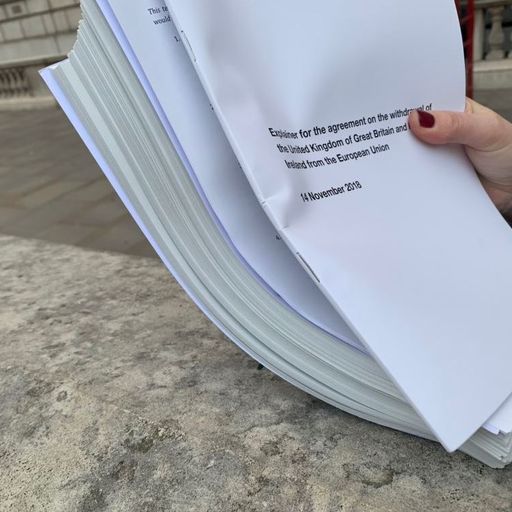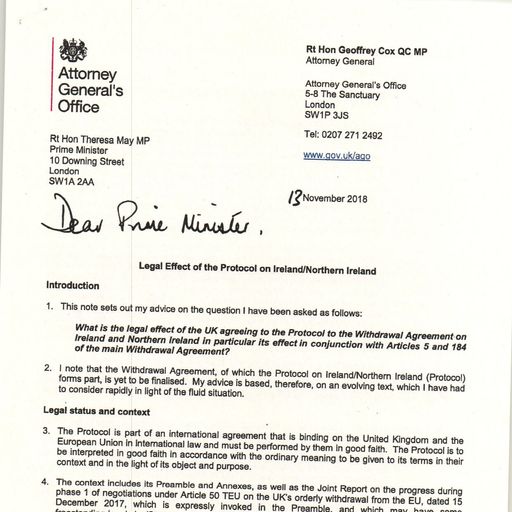On Tuesday, MPs will vote on Theresa May's Brexit deal, which sets out the terms of the divorce from Brussels and lays the groundwork for the future relations.
If the deal doesn't pass through the House of Commons, the prime minister says Britain will crash out of the European Union with no deal at all.
She needs to convince a majority of 650 MPs that the deal is in the country's best interests, but without a majority in parliament herself, Mrs May faces an uphill battle.
 |
| Supporters of Brexit fear it might not happen |
When is the vote happening?
The vote will take place on 11 December.
MPs will have been debating the deal for eight hours a day for five days by the time they vote.
Voting is due to start at 7pm.
How does the vote work?
Once the debate finishes on Tuesday, Commons Speaker John Bercow will ask those in favour of the amendment to shout "aye".
Those against the amendment will shout "no".
If any MPs shout no there will be a formal vote, called a division. MPs will then walk out of the House through different doorways to register their vote.
Four tellers will then assemble in front of the Speaker and read the result.
 |
| Mrs May looks on course to lose Tuesday's vote |
Once each amendment has been voted on, the main motion, to approve or not approve of the withdrawal agreement, will be voted on, by the same process.
What are they voting on?
MPs will vote on a motion saying they have approved the 585-page withdrawal deal, which sets out the details and technicalities of disentangling the country from the EU after more than 40 years of integration.
They will also vote on whether or not to approve a shorter document, a 27-page piece which explains Britain's future relationship with the EU.
Withdrawal deal in detail: What you need to know
As well as the main documents, MPs will vote on suggested amendments.
Mr Bercow will decide on six amendments at the most which will be put to the Commons.
If an amendment is approved, the wording will be added to the motion. Although the government is not bound by the amendment, they will be hard to ignore and could set Mrs May's next steps for her.
Government minister have said nay amendments which are passed may prevent the deal being ratified with the European Union.
Mrs May will have to watch as MPs vote on several matters, not just one, with each having the potential to scupper her plans.
 |
| A Member State which decides to withdraw shall notify the European Council of its intention... the Treaties shall cease to apply... two years after the notification |
What are the amendments?
The Labour Party amendment is designed to make sure Britain cannot leave the EU without an exit agreement.
This means Mrs May's threat that it's her deal or no deal would not sit with the Commons, and Britain would have to stay in the European Union until a new agreement is reached and passed.
A cross-party group has tabled a similar amendment, which blocks Mrs May's deal and rules out a no-deal Brexit.
It would transfer more power back to the Commons if her deal fails.
The withdrawal agreement already sets out that if the deal is defeated in the Commons, Mrs May and her government will have 21 days to give a statement setting out what is next.
But this amendment, tabled by former Attorney General Dominic Grieve, allows MPs to amend any motion the prime minister brings back to the House.
That could have a huge impact on the course of Brexit.
The SNP and Plaid Cymru have tabled an amendment to extend Article 50, which would stop Britain leaving the EU without a deal being done.
The amendment also calls on Mrs May to "respect the will of the Scottish Parliament and the Welsh Assembly" who have both voted against the deal.
The Labour Party also wants an amendment calling for a second referendum, after it won support at their party conference.
Several of the tabled amendment focus on the backstop in Northern Ireland - a measure that has been widely rejected by MPs. The amendments call for new solutions to the border problem.
Mrs May and her ministers insist the backstop won't need to be used, and that another arrangement will be in place before it comes to it.
One amendment, led by Frank Field, calls for the UK's ultimate right to permanently end the backstop, after it emerged Britain wouldn't be able to do it on its own.
Another amendment calls for the divorce bill with the EU to be lowered to £19.5bn and for no more payments to be made until after a Free Trade Agreement is confirmed.
Who will vote how?
MPs have been digesting and dissecting the proposals put forward by Mrs May from the EU and some have been more vocal than others about how they intend to cast their vote.
Here is full list of MPs and how they are expected to vote next week. These votes relate to how they will vote on the motion to approve the withdrawal agreement as it stands and not on the amendments which have been tabled.
As may be expected, the majority of Labour MPs are planning to vote against the withdrawal deal, with Sky News estimating 249 Labour MPs will vote that way.
Five Labour MPs have not declared and one says they will vote for the deal.
In the Conservative camp, 93 MPs say they will vote against the deal, amounting to about a quarter of Tory members of the Commons.
Mrs May will be able to count on the support of 176 of her MPs, but will have to work to woo the undecided 45.
She can also rely on three independent MPs, including former Liberal Democrat Stephen Lloyd who resigned the whip to vote for the deal. He said to do otherwise would betray his voters in his constituency.
DUP members, of which there are 10, will not be supporting the deal. This is despite the party's confidence and supply arrangement with the Conservative Party which allowed Mrs May to form her government after the general election.
But also against the prime minister's deal are five independent MPs, one Green MP, 11 Liberal Democrat MPs, 35 Scottish National Party MPs, and four members of Plaid Cymru.
What happens next?
If Mrs May wins, which is not expected to happen, then the deal will be written into law.
It will mean Britain will be ready to leave the EU on 29 March.
But if she loses, which is more likely, there are several possible scenarios.
1. Same deal
Mrs May might just put the same deal to the House all over again. She may reiterate her warning that there is no other deal available from the EU and hope that members decide they will have to back what she has offered.
2. Back to Brussels
But she could find herself hopping back on the Eurostar and going to Brussels for more meetings and negotiations. Brussels has insisted this is the only deal, so she may not be able to get any changes.
Or she might come back with a new deal, or an update of the old deal, which would be put to Parliament for another vote.
The DUP has said their main concern is for Mrs May to remove the Northern Ireland backstop from the deal, which if she manages, could get her their support.
3. Leadership challenge
Mrs May faces the prospect of a challenge over her leadership. Earlier this year, several MPs indicated they had sent letters of no confidence to Graham Brady, the chairman of the 1922 Committee.
 |
| Sir Graham Brady will know when enough MPs want to hold a vote on the PM |
She might face a vote of no confidence in her leadership from the rest of her party and if she loses that, there will be a leadership contest in the Conservative Party.
The party would then hold an internal election, with the candidate with the fewest number of votes dropping out round by round as their colleagues vote. When it gets to the final two, the Conservative Party membership will have their say.
This would end Mrs May's premiership, but it does not really progress Brexit. With the party split over Brexit, it is hard to speculate what a new leader might do.
4. Back to the people
There are also two scenarios where decisions go back to the people.
The People's Vote campaign argues that Britain needs a second referendum, with as many as three options on the cards: this deal; leave with a different deal; remain in the EU after all.
Mrs May has repeatedly dismissed calls for a new referendum.
She could effectively send the deal to the people by holding a general election. It would be the second one she has called as prime minister and might leave her even worse off than she currently is.
Returning a different party as a majority to the Commons is likely to put the final nail in the coffin of the current withdrawal agreement.
5. Resign
Mrs May could decide to follow in her predecessor's footsteps, and resign as David Cameron did after the referendum result was announced. However the PM has been adamant that she is the one to deliver on Brexit.
Most of these options require an extension to Article 50 to stop Britain crashing out without a deal.
At the moment, Britain stands to leave on 29 March, but if the EU grants a few months longer, there could be time to go to a second referendum, or a general election, and take the next steps.
However, Mr Grieve warned on Sky News that he did not believe the EU would be willing to grant much more than a three-month extension.
Is this the last time MPs will vote on Brexit?
No, the Brexit saga is due to continue after the Christmas recess.
Once Tuesday's meaningful vote is out of the way, MPs will vote on the Withdrawal Agreement and Implementation Bill, also called the EU (Withdrawal) Bill.
The success of that vote hinges on the outcome of Tuesday's meaningful vote.
It might not be a very merry Christmas or a happy New Year for Mrs May.

